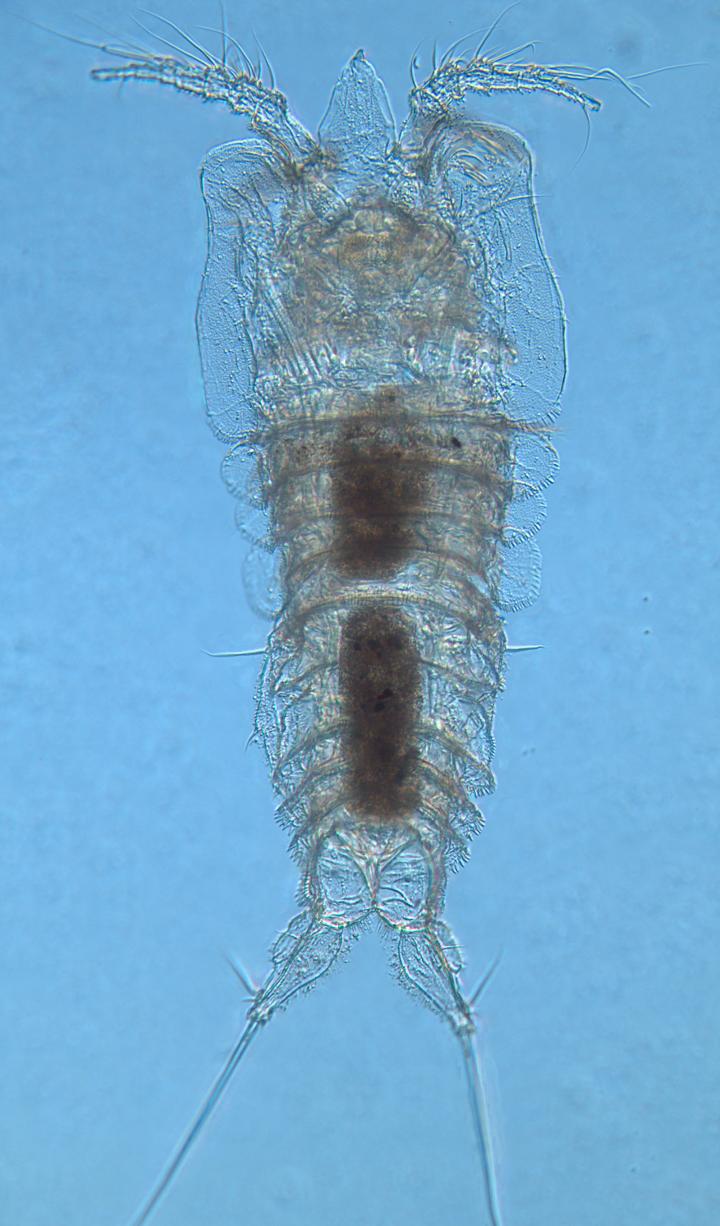 “독도에서 진화한 생물 확인” / 사진제공=국립호남권생물자원관 |
기후에너지환경부 산하 국립호남권생물자원관(관장 박진영)은 ‘독도 주변 해역 중형저서동물 분류학적 연구’를 통해 요각류 신종 2종을 새롭게 발견하고, 이를 국제 학계에 보고할 예정이라고 23일 밝혔다.
요각류는 갑각강에 속하는 미세 동물로 해양 생태계에서 어류의 주요 먹이원이자 동물성 플랑크톤의 핵심 그룹이다.
몸길이는 1~4mm로 작아 현미경으로만 관찰할 수 있으며, 우리나라에서는 약 1,200종이 보고돼 있다.
연구진은 지난 9월, 독도 주변 암초(가재바위·해녀바위·독립문바위)와 모래 퇴적물에서 해당 신종의 서식을 확인했다.
이번에 발견된 2종은 갈고리노벌레목(Harpacticoida)에 속하며, 1종은 기존 분류체계에 없는 새로운 ‘과(new family)’, 또 다른 1종은 장군여왕노벌레과(Thalestridae) 내에서 새로운 ‘속(new genus)’을 제안할 수 있을 정도로 독자성이 높은 신종으로 확인됐다.
국립호남권생물자원관에 따르면, 이들 신종은 독도의 고립된 화산섬 환경에 적응하며 독자적으로 진화한 것으로 추정된다.
연구진은 이번 성과가 우리나라 섬 생물의 기원과 진화 과정을 밝히는 섬생물지리학 연구의 핵심자료가 될 것으로 기대하고 있다.
연구 결과는 내년 상반기 국제 학술지에 투고되며, 정식 등재를 통해 신종의 ‘신과·신속’ 제안도 공식화될 예정이다.
김종국 국립호남권생물자원관 전임연구원은 “독도의 날(10월 25일)을 맞아, 특정도서 1호인 독도의 생물다양성 가치를 국제적으로 알리고 국가 생물주권을 강화하는 중요한 성과”라며 “앞으로도 독도를 포함한 특정도서 신규 자생생물 발굴을 지속적으로 확대하겠다.”고 말했다.
발견 위치 : 독도 주변 암초 및 해저 퇴적물
발견 생물 : 요각류 신종 2종
학술 가치 : 신과·신속급 신분류군 제안 가능
의미 : 독도 생물주권·섬생물지리학 연구 핵심자료
 “독도에서 진화한 생물 확인” / 사진제공=국립호남권생물자원관 |
 “독도에서 진화한 생물 확인” / 사진제공=국립호남권생물자원관 |
 “독도에서 진화한 생물 확인” / 사진제공=국립호남권생물자원관 |
[Climate & Environment = News Channel]
newscheaner@kakao.com
“Evidence of Species Evolved on Dokdo” – National Research Institute for Biological Resources Discovers Two New Copepod Species
The National Honam Biological Research Center under the Ministry of Climate, Energy, and Environment (Director: Jin-Young Park) announced on the 23rd that its research team has discovered two new species of copepods through a study on “Taxonomic Research of Mesobenthic Invertebrates in the Coastal Waters of Dokdo.” The newly identified species will be submitted to the international scientific community for official registration.
Copepods are tiny crustaceans and key members of marine ecosystems, serving as an essential food source for fish and a major component of zooplankton. Measuring only 1–4mm in length, they can only be observed under a microscope, and approximately 1,200 species have been recorded in Korea to date.
The research team confirmed the two new species in September, collected from rocky reefs around Dokdo (including Gajaebawi, Haenyeobawi, and Doknipmunbawi) as well as nearby sedimentary sites.
The newly discovered species belong to the order Harpacticoida. One of the species is distinct enough to propose the establishment of a new family, while the other possesses morphological traits significant enough to be classified as a new genus within the family Thalestridae.
According to the institute, these species are presumed to have evolved independently, adapting to Dokdo’s isolated volcanic island environment. The discovery is expected to serve as core data for island biogeography research, contributing valuable insight into the origins, evolution, and distribution of Korean island fauna.
The research findings will be submitted to an international journal in the first half of next year, and the proposal for the new family and genus will be formalized upon official publication.
Jeong-Guk Kim, a senior researcher at the National Honam Biological Research Center, stated,
“In time for Dokdo Day on October 25, this discovery highlights the biological diversity and ecological value of Dokdo—Korea’s first designated Ecological Protection Area. It will play an important role in strengthening national biological sovereignty. We will continue expanding our exploration of new native species on Dokdo and other protected islands.”
???? Summary of Discovery
Category Details
Location Rocky reefs and seabed sediment around Dokdo
New Species Two newly identified copepod species
Scientific Value Potential proposal of a new family and new genus
Significance Core data for biogeography and national bio-sovereignty
박인석 기자박 newscheaner@kakao.com
 2025.12.12 (금) 04:20
2025.12.12 (금) 04:20



































